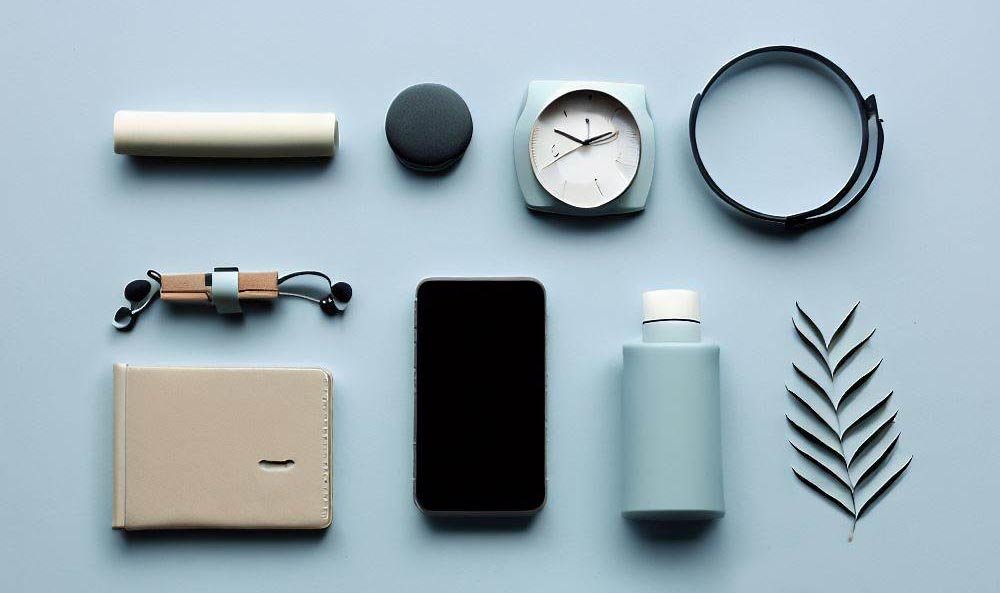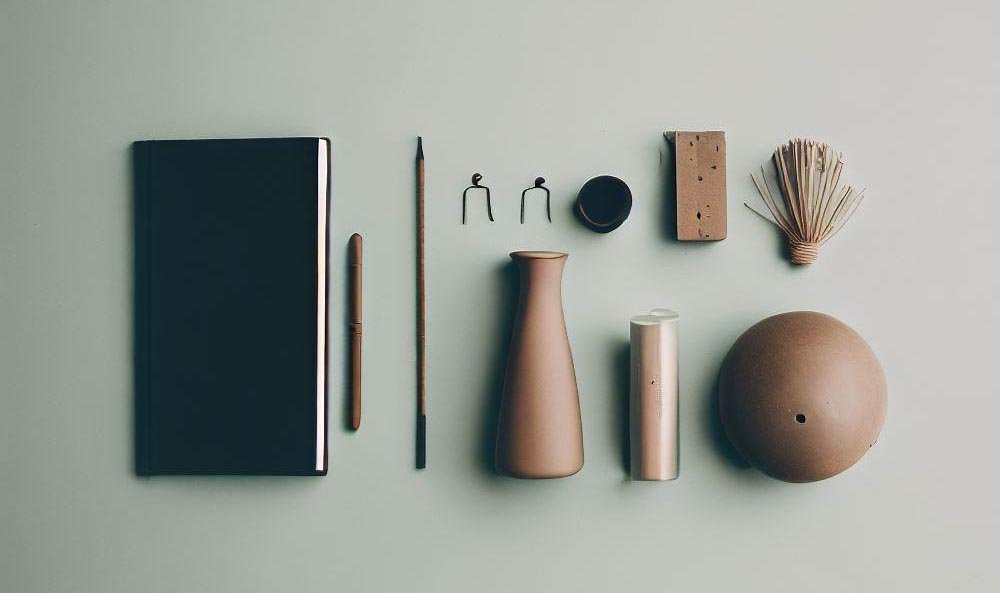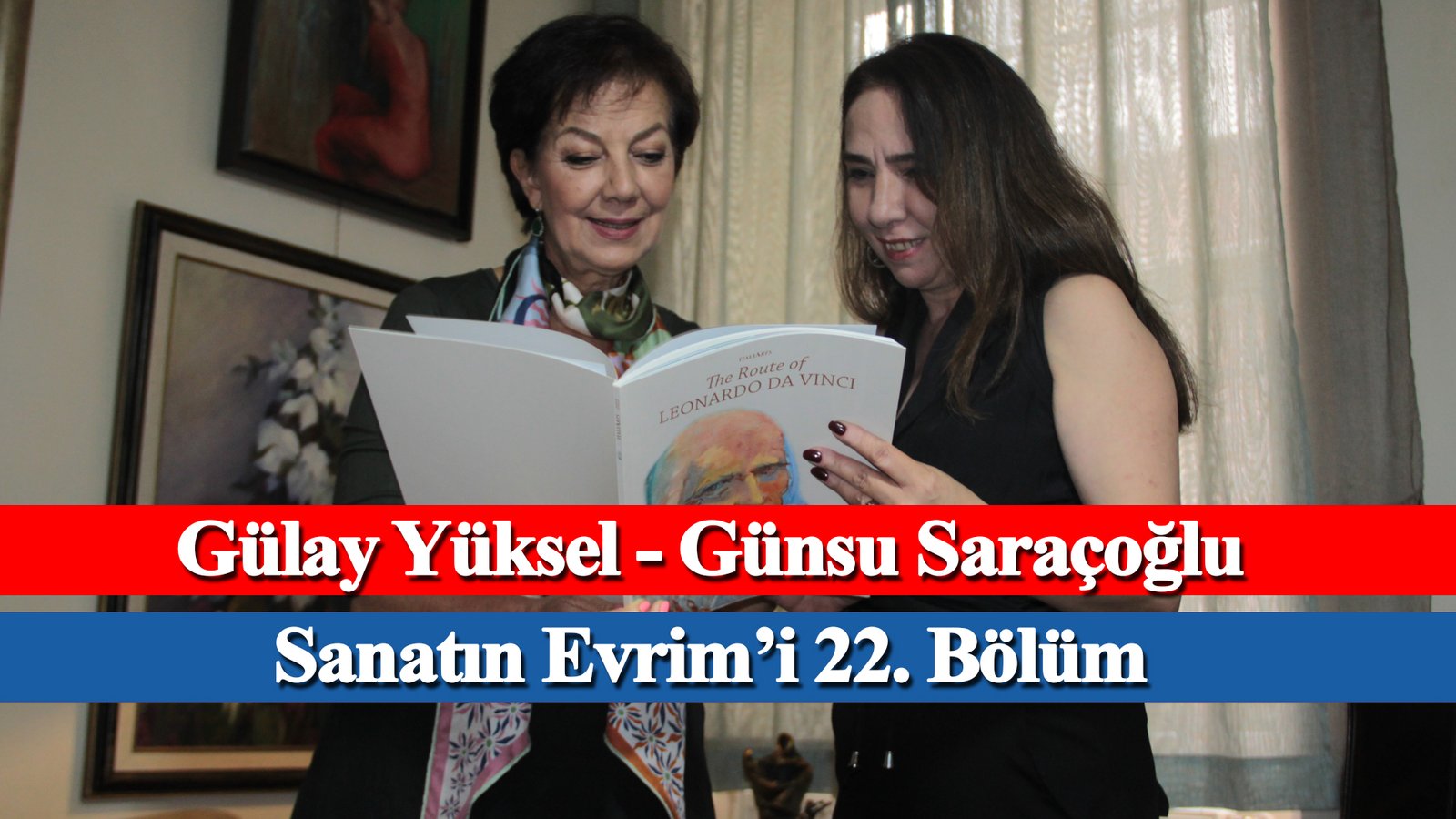In today’s rapidly changing and complex world, people often seek a simpler and more meaningful life. As a result of this pursuit, the minimalist movement is increasingly capturing the attention of many. Minimalism is a philosophy that aims to create a simpler, more focused, and more meaningful lifestyle by eliminating unnecessary belongings and complexity from your life. So, how can you simplify your life by reducing your belongings? Here’s our step-by-step guide:
- The Purpose of Minimalism
Understanding the purpose of minimalism begins with grasping the reasons for transitioning to this lifestyle.
In the fast-paced and consumption-driven world of today, minimalism is a philosophy that encourages people to adopt a simpler, more meaningful, and balanced way of living. One of the fundamental reasons for transitioning to this lifestyle is to free oneself from the burdens of unnecessary complexity brought about by modern life and the pressures of consumerism.
Having fewer possessions and reducing unnecessary complexity saves time and energy.
Constantly managing, organizing, and maintaining various belongings throughout the day requires time and energy. By adopting a minimalist approach, you focus only on the things you truly need and will use. This leads to more organization and ease both in your home and other areas of your life. It also reduces the urge to engage in unnecessary shopping, allowing you to manage your material and time resources more effectively.
Furthermore, it helps you concentrate on things you value both materially and spiritually.
Minimalism emphasizes a search for depth and meaning rather than surface-level material wealth. When choosing your possessions, you focus not only on those that are materially useful but also on those that bring you happiness and meaning. This makes your life more meaningful and fulfilling. By distancing yourself from materialism, you can find more opportunities to focus on experiences and people.
For these reasons, understanding the purpose of minimalism and the reasons for transitioning to this lifestyle helps individuals lead a simpler, more focused, and more satisfying life. Having fewer possessions and reducing unnecessary complexity allows you to allocate time and energy to valuable things. In conclusion, minimalism encourages individuals to focus on both material and spiritual wealth and to live their lives in a more profound way.
- Evaluate Your Belongings
The first step is to review your existing belongings. Open each room, drawer, and closet one by one and consider how important each item is to you. Identify items you don’t need or no longer use.
This step is one of the critical and effective stages in transitioning to minimalism. Every item in your home occupies your energy, time, and space. Therefore, a thorough examination of each room and storage space is necessary.
Start by opening each room, drawer, and closet and reviewing their contents. Consider how valuable and significant each item is to you. Think about whether an item brings you happiness, serves a purpose, and is used frequently.
If you believe an item holds true meaning for you, you can easily make a decision to make room for it and organize it. However, identifying items you don’t need or no longer use can be more challenging. At this point, you can ask yourself questions like: “When did I last use this item?”, “Do I really need this?”, or “Does this item hold emotional significance for me?”
Be open-minded while identifying items and evaluate your emotional attachments objectively. Minimalism is based on the idea of preserving only functional and valuable items, rather than accumulating possessions unnecessarily.
After completing this step, you will have identified items you no longer need or find meaningful. You can consider options like donating, selling, or discarding these items. This process not only helps you declutter your physical possessions but also assists in clearing your mindset and lifestyle.
- Begin Reducing
When deciding to reduce your belongings, it’s important to proceed step by step. You can tackle a certain amount of items each day or week. Consider items carefully based on what truly brings you happiness and functionality, and donate or sell what’s unnecessary.
Reducing your belongings might seem like a daunting task, but taking it step by step can make the process more manageable. You can dedicate a certain time each day or week to this purpose. This way, you won’t feel rushed while reviewing your items and can proceed with more focus.
Start by determining which room or category you want to begin with. Categorizing items, such as clothing, books, kitchenware, can be helpful. This approach allows you to tackle each category more systematically and effectively.
As you address each category, think about how important each item is to you. Consider factors like frequency of use, emotional value, and functionality. For instance, when going through your clothing category, think about whether each piece brings you joy or if you wear it regularly.
During this process, you can separate items you believe are unnecessary or no longer serve you. This categorized approach enables you to examine your items systematically and can provide motivation as you see progress in completing each category.
Additionally, this approach can help bring more organization into your life. By organizing items within each category, you can more easily keep track of where everything is. This can contribute to a more orderly and stress-free daily life.

- Categorize Your Items
Categorizing your items can help you address them in a structured manner. For instance, you can categorize them into clothing, books, home items, and deal with each category separately. This provides a more systematic and effective decluttering process.
Categorizing your items can make the reduction process more manageable and planned. This approach allows you to thoroughly review and identify unnecessary items within each category, providing you with a focused opportunity.
To begin, separate your belongings into groups based on similar features or purposes. You can look at categories such as clothing, shoes, accessories, books, electronics, and more. This way, you can address items within each category more intently.
When addressing each category, think about how important each item is to you. Consider its frequency of use, emotional value, and functionality. For example, within the clothing category, consider whether each item brings you happiness or if you wear it often.
At this stage, you can start setting aside items that you consider unnecessary or no longer useful. This categorized approach allows you to declutter your items in a more systematic manner and provides a sense of accomplishment as you complete each category.
This approach can also contribute to more order and organization. By arranging items within categories, you can easily keep track of where things are located. This can enhance the overall organization and functionality of your living space.
- Examine Emotional Attachments
Belongings often carry emotional attachments. However, these attachments should not cloud the true meaning and functionality of the items. While an item may hold sentimental value, it’s important for emotional attachments not to hinder its true purpose.
It’s common to form emotional connections with belongings. The meaning an item holds for you or the memories associated with it can give it a special value. However, these emotional connections should not lead to unnecessary accumulation of items over time.
The emotional value of an item can sometimes overshadow its true significance or functionality. Therefore, it’s important to carefully evaluate why each item is meaningful to you and how it adds value to your life. If an item truly brings you happiness, triggers memories, or holds sentimental value, it might be reasonable to make space for it.
However, remember that adopting a minimalist lifestyle doesn’t mean you have to keep everything. While evaluating your emotional connections, it’s also important to set aside items you don’t really use or find meaningful. This can contribute to a sense of mental and emotional freedom, not just physical decluttering.
When evaluating emotional attachments, consider asking yourself questions like:
- Does this item truly bring me joy and happiness?
- Is this item enhancing my life in a meaningful way?
- Does the emotional value of this item outweigh its functional purpose?
- Can I preserve the memory associated with this item in a different way (e.g., through photographs)?
By addressing these questions, you can strike a balance between preserving meaningful items and reducing unnecessary clutter.
- Organize Mindfully
Organizing your belongings mindfully is a crucial aspect of minimalism. Once you’ve identified the items you want to keep, ensure that you organize them in a way that promotes functionality, accessibility, and a sense of tranquility.
Mindful organization involves arranging your belongings in a deliberate manner that aligns with the principles of minimalism. This helps you maintain a clutter-free living space and supports your intention to lead a simpler, more focused lifestyle.
Here are some tips for mindful organization:
- Functional Zones: Assign specific areas or zones for different activities or items. For instance, create a dedicated space for work, leisure, relaxation, and other activities. This ensures that each area serves its purpose effectively, reducing the temptation to clutter spaces with unnecessary items.
- Declutter Regularly: Regularly revisit your belongings and declutter as needed. Over time, items might accumulate again, so it’s important to maintain a proactive approach to decluttering.
- Storage Solutions: Invest in storage solutions that align with minimalism. Opt for containers, shelves, and furniture that are simple, versatile, and efficient in maximizing space.
- Visible and Accessible: Keep items you use frequently visible and easily accessible. This prevents the need to dig through clutter to find what you need.
- One In, One Out: Adopt a “one in, one out” policy. When you bring in a new item, consider letting go of an existing one. This helps maintain a balanced and clutter-free environment.
- Digital Organization: Extend mindful organization to your digital life as well. Organize your digital files, emails, and online activities in a way that promotes efficiency and reduces digital clutter.
Mindful organization supports the principles of minimalism by ensuring that your living space remains conducive to the lifestyle you’re striving to achieve. It helps you avoid the re-accumulation of unnecessary items and fosters an environment of simplicity and focus.
- Value Experiences Over Possessions
One of the core tenets of minimalism is valuing experiences over possessions. This means directing your attention and resources toward meaningful experiences, relationships, personal growth, and adventures rather than the accumulation of material goods.
Shifting your focus from possessions to experiences is a key aspect of adopting a minimalist mindset. Here’s how you can prioritize experiences:
- Experiential Budgeting: Allocate a portion of your budget to experiences such as travel, dining out, attending events, and engaging in activities that bring you joy.
- Collect Memories: Instead of accumulating physical souvenirs or items, collect memories from your experiences. Take photographs, write journals, and create tangible reminders of your adventures.
- Quality Time: Spend quality time with loved ones and engage in activities that foster meaningful connections. Building relationships and making memories contribute to a fulfilling life.
- Learning and Growth: Invest in learning new skills, pursuing hobbies, and personal growth. These experiences enrich your life and contribute to a sense of accomplishment.
By valuing experiences over possessions, you align your lifestyle with the principles of minimalism and create a more purposeful and fulfilling life.
- Develop Mindful Consumption Habits
Minimalism isn’t just about decluttering; it’s also about adopting mindful consumption habits moving forward. This means being intentional about what you bring into your life and carefully considering whether a new purchase aligns with your values and needs.
Here are some tips for developing mindful consumption habits:
- Needs vs. Wants: Before making a purchase, ask yourself if the item is something you truly need or if it’s a fleeting want. Consider whether the item will contribute to your life in a meaningful way.
- Quality Over Quantity: Prioritize quality over quantity. Invest in items that are well-made, durable, and align with your long-term needs.
- Consider Impact: Think about the environmental and ethical impact of your purchases. Opt for products that are sustainable, eco-friendly, and produced under ethical conditions.
- Avoid Impulse Buying: Practice a “cooling-off” period before making non-essential purchases. This gives you time to evaluate whether the item is a genuine necessity or just a momentary desire.
- Practice Gratitude: Regularly reflect on the possessions and experiences you already have. Cultivating gratitude can help curb the desire for constant acquisition.
- Mindful Online Shopping: Apply the same principles to online shopping. Avoid adding items to your cart impulsively and carefully review your choices before checking out.
By adopting mindful consumption habits, you reinforce the minimalist mindset and prevent the accumulation of unnecessary possessions in the future.
- Embrace the Freedom of Minimalism
As you simplify your life through minimalism, you’ll likely experience a newfound sense of freedom. You’ll have more time, space, and mental clarity to focus on what truly matters to you. Embrace this freedom and use it to explore your passions, deepen your connections, and pursue your goals.
Here are some ways to embrace the freedom of minimalism:
- Explore New Opportunities: With fewer material possessions to tie you down, you’ll have the flexibility to explore new opportunities, travel, and try new experiences.
- Focus on What Matters: Use the extra time and mental space to focus on your goals, personal growth, and meaningful relationships.
- Practice Mindfulness: Minimalism encourages mindfulness by directing your attention to the present moment and your immediate surroundings. Embrace mindfulness practices to enhance your overall well-being.
- Reduce Stress: As you simplify your life, you’ll likely experience a reduction in stress and anxiety. Use this newfound peace to cultivate a calmer and more centered lifestyle.
- Give Back: Embrace the freedom to give back to your community or causes that matter to you. Volunteer, donate, or support initiatives that align with your values.
By embracing the freedom that minimalism offers, you’ll create a life that is rich in experiences, connections, and personal fulfillment.
- Practice Patience and Persistence
Transitioning to a minimalist lifestyle is a journey that requires patience and persistence. It’s a gradual process that involves reshaping your mindset, habits, and living environment. Be kind to yourself throughout this journey and celebrate each step of progress.
Here’s how to practice patience and persistence:
- Set Realistic Goals: Break down your journey into manageable goals. Celebrate small wins along the way, such as decluttering a specific area or reducing a certain number of items.
- Stay Focused: Keep your motivations and goals in mind when faced with challenges or moments of doubt. Remind yourself why you chose to embrace minimalism in the first place.
- Revisit Your Why: Regularly reflect on the benefits of minimalism and how it’s positively impacting your life. This can reinforce your commitment and motivation.
- Adapt and Adjust: Be open to adapting your approach as you learn and grow. Your minimalist journey is unique to you, so don’t hesitate to adjust your strategies based on your experiences.
- Celebrate Progress: Acknowledge your progress, no matter how small. Each step you take brings you closer to a simpler and more meaningful life.
By practicing patience and persistence, you’ll navigate challenges with resilience and continue to make meaningful strides toward a minimalist lifestyle.
Remember that minimalism is a personal journey, and there is no one-size-fits-all approach. Tailor these principles to your individual circumstances and preferences. As you continue to embrace minimalism, you’ll discover the unique ways it enhances your well-being and brings greater intentionality to every aspect of your life.




























